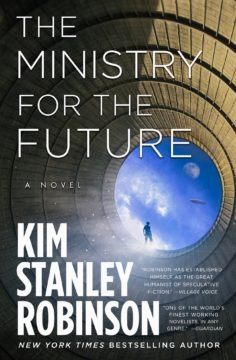by Leanne Ogasawara

1.
The year is 2025.
Frank, who is an American aid worker living in northern India, is alarmed to wake up one morning to an outside temperature of 103° F with 35% humidity. Things go from bad to worse, when the power grid goes down, and there is no air conditioning. As temperatures climb to 108° F with 60% humidity, people begin dying. They are being cooked to death.
Known as a wet-bulb temperature event, a sustained combination of high temperature plus high humidity exceeding wet-bulb temperature 35 °C (95 °F) will likely cause death, even in a healthy person sitting in the shade with plenty of water to drink.
When things become unbearable, Frank takes refuge with many others in a shallow lake. But the water is too warm –and by morning, everyone in the lake but Frank is dead. He has no idea why he survived –but life will never be the same.
The shock surrounding the event, which saw millions die in Uttar Pradesh, led to the formation of the Ministry for the Future. Part of the United Nation’s Convention on Climate Change, it was founded under Article 14 of the Paris Agreement with an office set up in Zürich.
The people of India are rightly furious. They point out that the Europeans sucked their resources dry for hundreds of years, and by the time they shook free of their colonialist yoke and tried to develop, they were being told by wealthy Europeans that, “Sorry, you are too late to the party. Rising CO2 and all that.” Indian leadership argues that they use far less coal-generated electricity to bring their people out of poverty than the Americans do to live what in America is considered a normal life.
Located in a part of the world that will bear the initial brunt of the crises, India had expected that other members of the Paris Convention would come to their aid.
Drones were seen overhead so the Indian people knew the situation was being monitored, but at the end of the day, they appeared to be left to die.
And so, they decide to take matters into their own hands. Read more »
